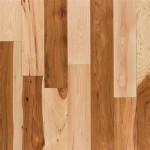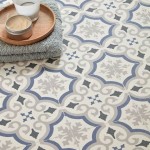If you’re looking to upgrade your flooring, laminate floor trim is an essential component of a successful installation. It’s a crucial part of tying the look together, and it can help protect your flooring from everyday wear and tear. But with so many different types of laminate floor trim available, it can be difficult to know where to start. This comprehensive guide will help you understand the different types of trim, why it’s needed, and how to choose the right one for your project.
What Is Laminate Floor Trim?
Laminate floor trim is an accessory used to finish off the edges of a laminate flooring installation. It’s usually made from the same material as the laminate flooring, such as wood or PVC, and it’s designed to match the look of the flooring. Laminate floor trim can be used in a variety of ways, including hiding unsightly gaps, protecting door and wall transitions, and even creating a decorative look. Additionally, it can help prevent dirt, dust, and moisture from entering the flooring system, which can help prolong the life of your flooring.
Types of Laminate Floor Trim
There are several types of laminate floor trim available, and each has its own advantages. The most common types are:
- T-Molding: This type of molding is used to transition between two different types of flooring, such as between laminate and hardwood. It also helps to bridge the gap between two rooms.
- Quarter Round: Quarter round is a small, quarter-circle shaped piece of trim that’s used to cover small gaps and hide seams. It’s most often used around the edges of a room or near doorways.
- Reducer Strip: This type of trim is used to bridge the gap between a higher and lower flooring surface. It’s usually used when transitioning from hardwood to laminate flooring.
- Stair Nose: This type of trim is used to finish the edges of stairs, and it can also be used to transition between two different types of flooring.
- End Cap: An end cap is used to finish the end of a row of laminate flooring. It’s a small piece of trim that covers the edge of the boards and helps to provide a finished look.
Choosing the Right Laminate Floor Trim
When choosing the right type of laminate floor trim for your project, it’s important to consider the type of flooring you’re using, the size of the gap you’re trying to cover, and the overall look and feel you’re trying to achieve. It’s also important to make sure that the trim you select is made from the same material as the laminate flooring. This will ensure a seamless transition and a more professional look.
Installing Laminate Floor Trim
Laminate floor trim can be installed in a variety of ways, depending on the type of trim you’re using. Generally speaking, trim should be installed after the laminate flooring is laid, and it should be secured with nails or adhesive. It’s important to follow the manufacturer’s instructions when installing the trim, as improper installation can lead to damage or a less-than-desirable finish.
Caring for Laminate Floor Trim
Caring for laminate floor trim is relatively easy. The trim should be regularly vacuumed or swept to remove any dirt or debris that may have accumulated. Additionally, it should be wiped down with a damp cloth from time to time. For tougher stains, a mild detergent can be used. It’s important to avoid using harsh chemicals or abrasive cleaning tools, as these can damage the finish of the trim.
Conclusion
Adding laminate floor trim to your flooring installation is a great way to enhance the look of your room and protect your flooring from everyday wear and tear. With so many different types of trim available, it’s important to choose the right one for your project. This guide has provided you with the information you need to make an informed decision, so you can be sure your laminate floor trim installation is a success.















Related Posts








